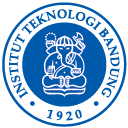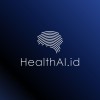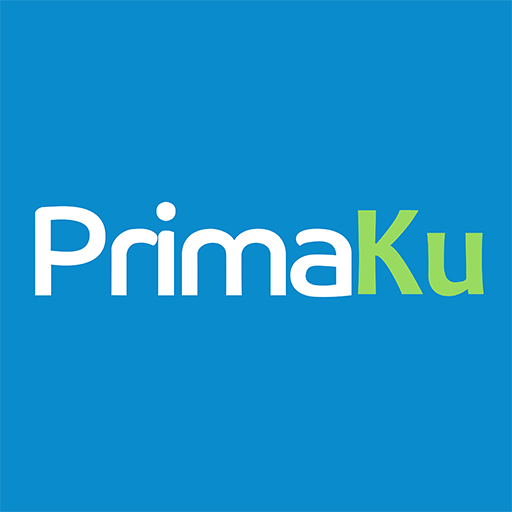I am a medical doctor with advanced experience in medical informatics, integrating a strong foundation in medicine with deep expertise in software engineering, artificial intelligence, machine learning, deep learning, and natural language processing. My academic and research background focuses on bioinformatics and health informatics, with experience in developing computational solutions that bridge medicine and technology. I am passionate about applying data-driven approaches to improve biomedical research, support clinical decision-making, and advance innovations in healthcare.
Keywords: Artificial Intelligence, Machine Learning, Deep Learning, Software Development, Bioinformatics, Health Informatics

Action required
Problem: The current root path of this site is "baseurl ("_config.yml.
Solution: Please set the
baseurl in _config.yml to "Education
-
 Wirtschaftsuniversität WienPhD at Institute for DPKMOct. 2025 - present
Wirtschaftsuniversität WienPhD at Institute for DPKMOct. 2025 - present -
 Institut Teknologi BandungMaster of Science in InformaticsAug. 2021 - Jul. 2024
Institut Teknologi BandungMaster of Science in InformaticsAug. 2021 - Jul. 2024 -
 Universitas IndonesiaMedical DoctorAug. 2015 - Jun. 2022
Universitas IndonesiaMedical DoctorAug. 2015 - Jun. 2022
Experience
-
 HealthAI.idFounderJul. 2024 - present
HealthAI.idFounderJul. 2024 - present -
 PT. Prodia Widyahusada, Tbk.Bioinformatics ScientistOct. 2024 - Sep. 2025
PT. Prodia Widyahusada, Tbk.Bioinformatics ScientistOct. 2024 - Sep. 2025 -
 PrimaKuData AnalystMar. 2022 - Jun. 2022
PrimaKuData AnalystMar. 2022 - Jun. 2022
Honors & Awards
-
Platinum award IndoHCF Award 20232023
-
1st place winner at the 6th Open Innovation 2022, IMERI2022
-
3rd place at DSE Day Pitching Competition, International Conference on Data and Software Engineering 2021 (ICoDSE 2021), Institut Teknologi Bandung2021
-
Top 25 Non-degree artificial intelligence training program, Digital Talent Scholarship 2018, Department of Electrical Engineering, Sepuluh Nopember Institute of Technology (ITS), Ministry of Communication and Informatics, Republic of Indonesia2018
-
Universitas Indonesia’s delegation for Pekan Ilmiah Mahasiswa Nasional 30 (PIMNAS 30), Universitas Muslim Indonesia (UMI), Makassar2017
-
Grand finalists at the 1st Open Innovation 2017, IMERI2017
Selected Publications (view all )
Enhancing Natural Language Inference Performance with Knowledge Graph for COVID-19 Automated Fact-Checking in Indonesian Language
Arief Purnama Muharram, Ayu Purwarianti
Journal of ICT Research and Applications (JICTRA). doi: 10.5614/itbj.ict.res.appl.2025.19.1.2 Spotlight Master's thesis
Automated fact-checking is a key strategy to overcome the spread of COVID-19 misinformation on the internet. These systems typically leverage deep learning approaches through Natural Language Inference (NLI) to verify the truthfulness of information based on supporting evidence. However, one challenge that arises in deep learning is performance stagnation due to a lack of knowledge during training. This study proposes using a Knowledge Graph (KG) as external knowledge to enhance NLI performance for automated COVID-19 fact-checking in the Indonesian language. The proposed model architecture comprises three modules: a fact module, an NLI module, and a classifier module. The fact module processes information from the KG, while the NLI module handles semantic relationships between the given premise and hypothesis. The representation vectors from both modules are concatenated and fed into the classifier module to produce the final result. The model was trained using the generated Indonesian COVID-19 fact-checking dataset and the COVID-19 KG Bahasa Indonesia. Our study demonstrates that incorporating KGs can significantly improve NLI performance in fact-checking, achieving the best accuracy of 0.8616. This suggests that KGs are a valuable component for enhancing NLI performance in automated fact-checking.
Keywords: Fact-Checking, Deep Learning, Natural Language Inference, Knowledge Graph, COVID-19
Automated Chest X-Ray Report Generator Using Multi-Model Deep Learning Approach
Arief Purnama Muharram, Hollyana Puteri Haryono, Abassi Haji Juma, Ira Puspasari, Nugraha Priya Utama
2023 IEEE International Conference on Data and Software Engineering (ICoDSE). doi: 10.1109/ICoDSE59534.2023.10291842 Spotlight Insight
Reading and interpreting chest X-ray images is one of the most radiologist's routines. However, it still can be challenging, even for the most experienced ones. Therefore, we proposed a multi-model deep learning-based automated chest X-ray report generator system designed to assist radiologists in their work. The basic idea of the proposed system is by utilizing multi binary-classification models for detecting multi abnormalities, with each model responsible for detecting one abnormality, in a single image. In this study, we limited the radiology abnormalities detection to only cardiomegaly, lung effusion, and consolidation. The system generates a radiology report by performing the following three steps: image pre-processing, utilizing deep learning models to detect abnormalities, and producing a report. The aim of the image pre-processing step is to standardize the input by scaling it to 128x128 pixels and slicing it into three segments, which covers the upper, lower, and middle parts of the lung. After pre-processing, each corresponding model classifies the image, resulting in a 0 (zero) for no abnormality detected and a 1 (one) for the presence of an abnormality. The prediction outputs of each model are then concatenated to form a 'result code'. The 'result code' is used to construct a report by selecting the appropriate pre-determined sentence for each detected abnormality in the report generation step. The proposed system is expected to reduce the workload of radiologists and increase the accuracy of chest X-ray diagnosis.
Keywords: Chest X-Ray, Radiology, Medical Report, Multimodel, Deep Learning
Survey of Smartphone Application Usage for Diabetes Management in Type-2 Diabetes Mellitus Patients in RSUPN Dr. Cipto Mangunkusumo Jakarta
Arief Purnama Muharram, Pradana Soewondo, Dicky Levenus Tahapary
20th ASEAN Federation of Endocrine Societies (AFES) Congress 2019 Spotlight Bachelor's thesis
[Introduction]
The rapid development of smartphone technology nowadays has enabled a new way of diabetes self-empowerment through the smartphone application usage. This study is aimed to obtain an overview of how smartphone and smartphone applications are used for diabetes management among Type-2 Diabetes Mellitus (T2DM) patients in RSUPN Dr. Cipto Mangunkusumo Jakarta (RSCM), a tertiary care and a national referral hospital in Indonesia.
[Methodology]This cross-sectional study was conducted in the Integrated Diabetic Clinic RSCM during the 2nd-to-3rd week of May 2019 by using a short questionnaire, of which assessed the level of smartphone ownership and smartphone application usage for diabetes management.
[Results]Thirty-one respondents participated in this study. The average age was 59 years-old and most of them were either retired (13/31, 41.9%) or not working (13/31, 41.9%). Only 11 respondents had a higher degree of education. While most of the respondents (18/31, 58.1%) had a basic monthly income <1 million IDR (60 USD), majority of respondents (27/31, 87.1%) had a smartphone, of which all of them were using Android. Only one respondent used it for diabetes management, while most of them used it only for standard communication purpose. This was due to the lack of information on available diabetes application.
[Conclusion]The use of smartphone among T2DM patients in our tertiary care hospital was high despite their low socioeconomic status. However, the smartphone application usage for diabetes management was very low, necessitating the need of information dissemination related to the potential benefit of diabetes application to all T2DM patients.
Keywords: Smartphone, Diabetes Application, Type 2 Diabetes Mellitus, Self-Management